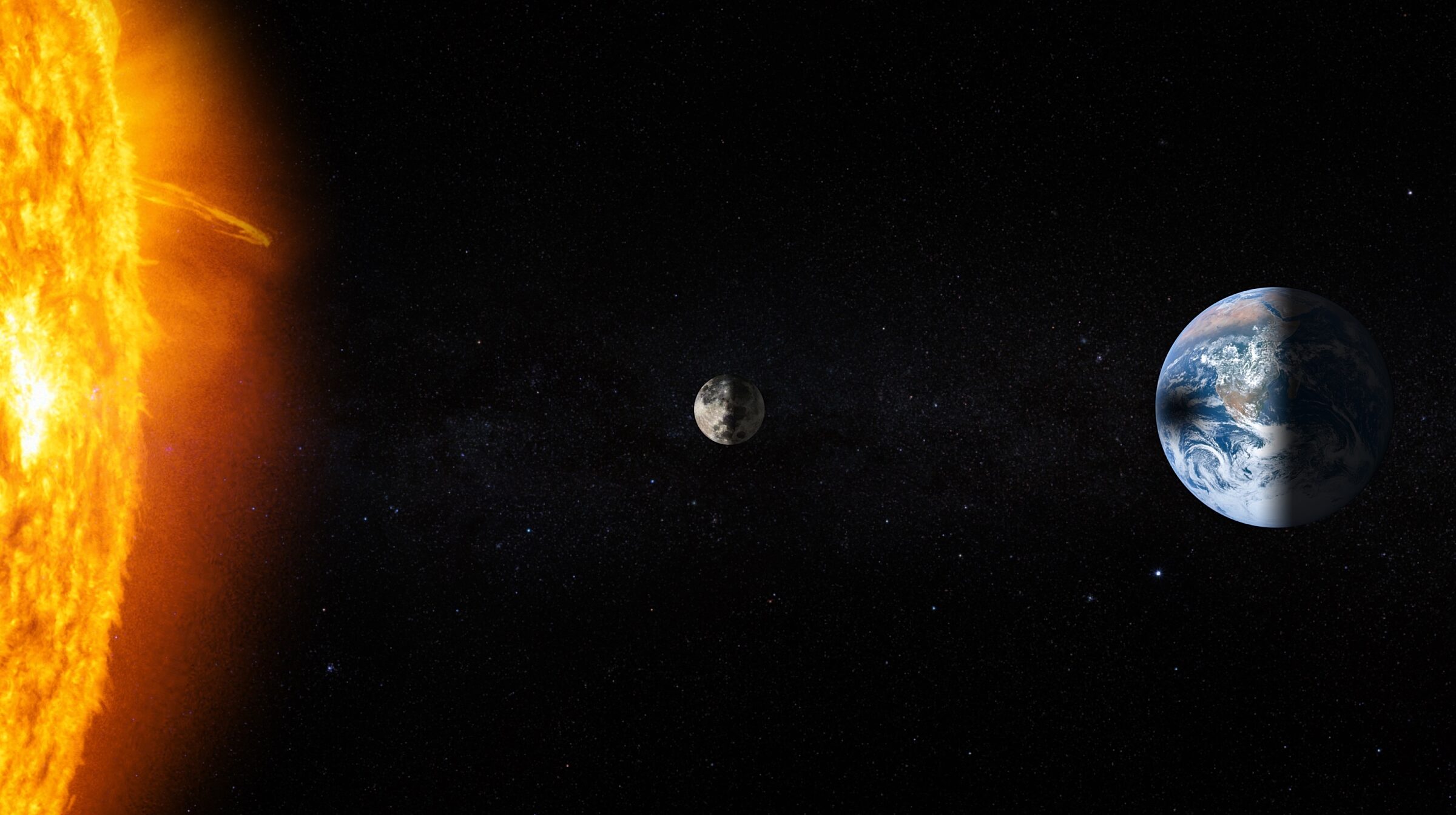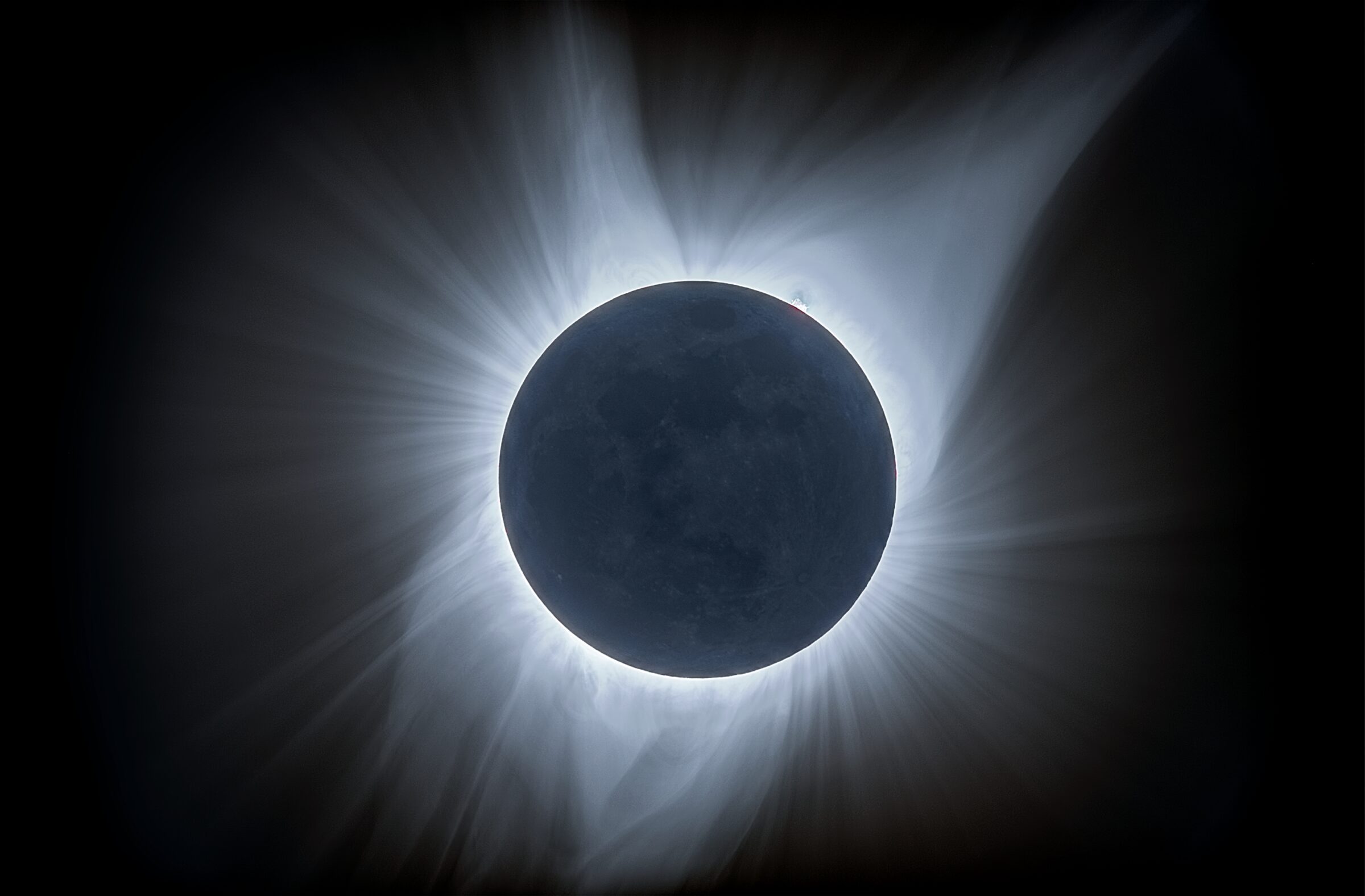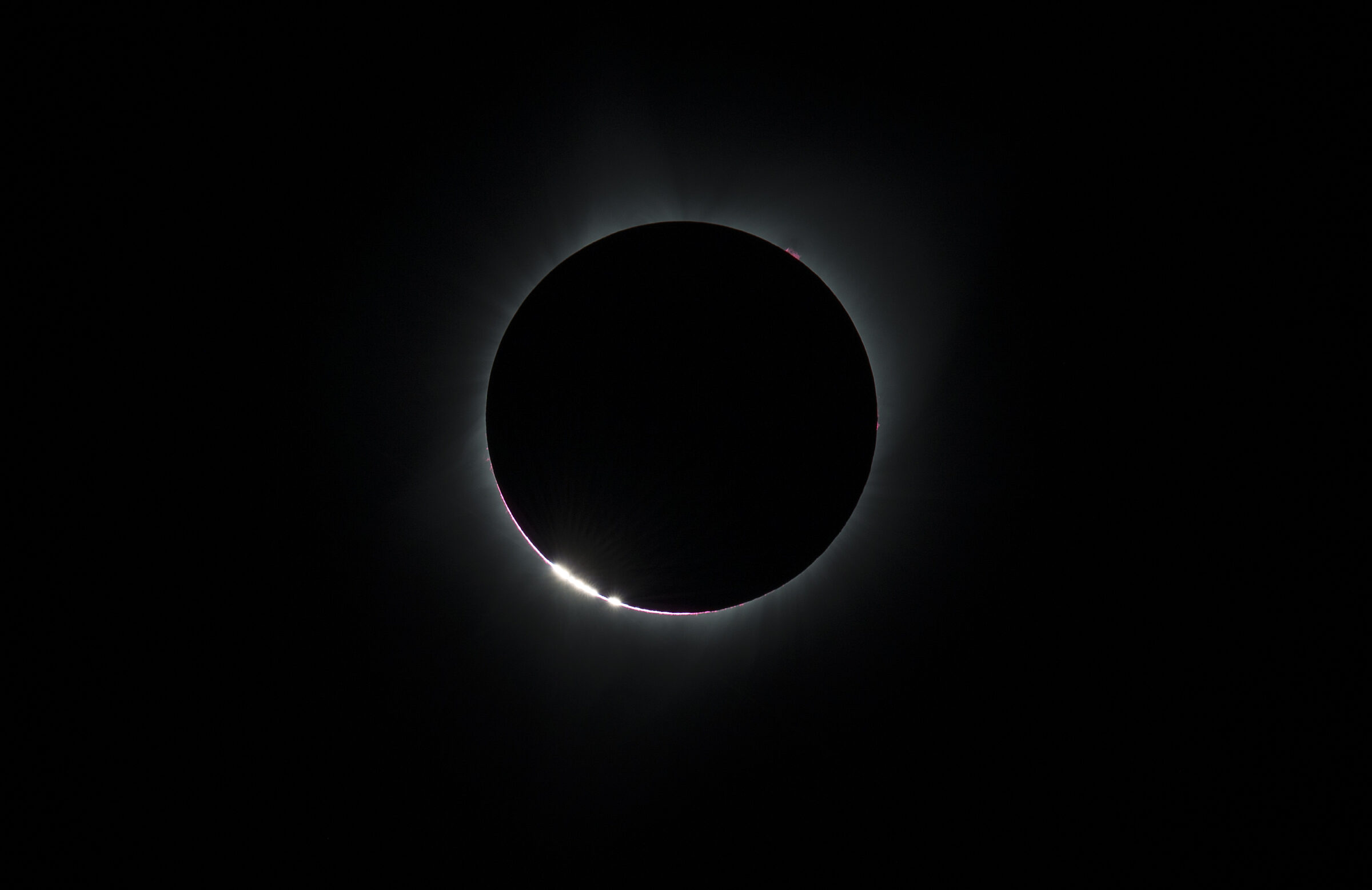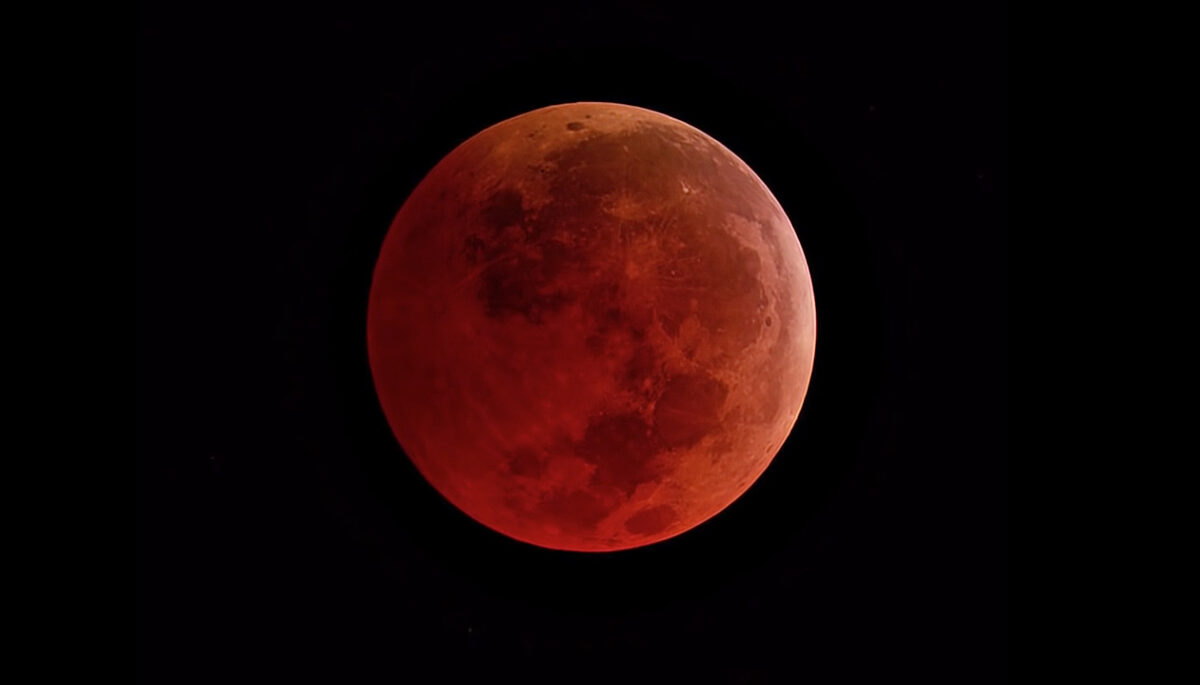Kate Howells • Sep 13, 2023
A guide to eclipse vocabulary
Eclipse words and terms you should know
If you’re getting ready to witness an eclipse, you’ll encounter some vocabulary that you might not know. Here is your complete guide to the terminology used to talk about total solar eclipses, partial and annular solar eclipses, lunar eclipses, and more.
Basic eclipse terms
Syzygy: The technical term for when three objects in space (like the Sun, Earth, and Moon) line up. (Pronunciation of this one is tricky: it sounds like “si-zuh-jee.”)
Umbra: The central, darkest part of the Moon or Earth’s shadow.
Penumbra: The outer, lighter part of the Moon or Earth’s shadow where there is still partial illumination.
Occultation/Obscuration: The state of being hidden from view, like when the Sun is obscured or occulted by the Moon.

Solar eclipses
Solar eclipse: When the Moon passes between the Sun and Earth, partially or completely blocking the Sun's light.
Total solar eclipse: When the Moon completely covers the Sun from the perspective of a location on Earth, creating a brief period of darkness.
Totality: The period when the Sun is completely obscured by the Moon.
Partial solar eclipse: When only a portion of the Sun is obscured by the Moon, creating a crescent-shaped Sun.
Annular solar eclipse: A type of eclipse where the Moon only covers the central portion of the Sun, leaving a ring of sunlight around the edges.
Hybrid solar eclipse: An eclipse that appears as a total eclipse in some locations along its path and as an annular eclipse in others.

How to safely view a total solar eclipse
To avoid risking permanent eye damage, you need eye protection to watch a solar eclipse. The easiest way to ensure eye safety is using solar eclipse glasses. These should be special glasses that say “ISO 12312-2” on them and that are made by a vendor approved by the American Astronomical Society. Otherwise, your glasses don’t meet international safety standards and aren’t fit for solar viewing.
Check out our complete solar eclipse glasses guide to learn more. You can also purchase The Planetary Society’s solar eclipse glasses from AAS-approved vendor American Paper Optics.
Solar eclipse phenomena
Diamond ring: A phenomenon during a total solar eclipse when a bright spot of sunlight appears just before or after totality, resembling a diamond on a ring.
Baily's beads: A series of bright spots and points of light that appear around the Moon's edge just before or after totality during a total solar eclipse.
Solar corona: The outermost layer of the Sun's atmosphere, which is visible during a total solar eclipse as a halo of faint light.
Solar prominence: Gaseous eruptions or loops of plasma that can be seen along the edges of the Sun during a total solar eclipse.
Annulus: The ring of light that is seen around the Moon during an annular solar eclipse.
Ring of fire: Another term for annulus.
Solar eclipse viewing
Eclipse path: The specific geographic region on Earth where a particular eclipse is visible, including the path of totality.
Path of totality: The narrow central portion of an eclipse path where a total solar eclipse is visible.
Eclipse magnitude: The fraction of the Sun's diameter covered by the Moon during an eclipse, which varies depending on the observer's location.
Solar eclipse glasses: Specialized, protective eyewear that allows safe viewing of a solar eclipse by filtering out harmful solar radiation.
Solar filter: A specialized filter or lens attachment used to safely observe the Sun during an eclipse without damaging your eyes or equipment.
Pinhole projector: A safe way of viewing the effect of a solar eclipse indirectly by poking a small hole in a piece of cardboard and looking at how the Sun’s shadow is cast on the ground through that hole.
Eclipse chasers: Enthusiasts who travel around the world to witness and experience total solar eclipses.

Lunar eclipses
Lunar eclipse: A celestial event that occurs when the Earth passes between the Sun and the Moon, causing the Earth's shadow to be cast on the Moon, resulting in a darkening or reddening of the Moon.
Total lunar eclipse: When the entire Moon is fully covered by Earth's shadow, causing it to appear dark and reddish-orange during totality.
Partial lunar eclipse: When only a portion of the Moon passes through Earth's shadow, causing a darkening of only a portion of the Moon's surface.
Penumbral lunar eclipse: A subtle type of eclipse where the Moon passes through Earth's penumbral shadow, causing a slight dimming of the Moon's brightness.
Blood Moon: A popular term for the Moon's appearance during a total lunar eclipse when it takes on a reddish hue due to scattering and the refraction of sunlight through Earth's atmosphere.
Super blood Moon: When a lunar eclipse happens during a supermoon, when the Moon is full during a point in its orbit when it is closer to Earth.
Support our core enterprises
Your support powers our mission to explore worlds, find life, and defend Earth. You make all the difference when you make a gift. Give today!
Donate

 Explore Worlds
Explore Worlds Find Life
Find Life Defend Earth
Defend Earth



